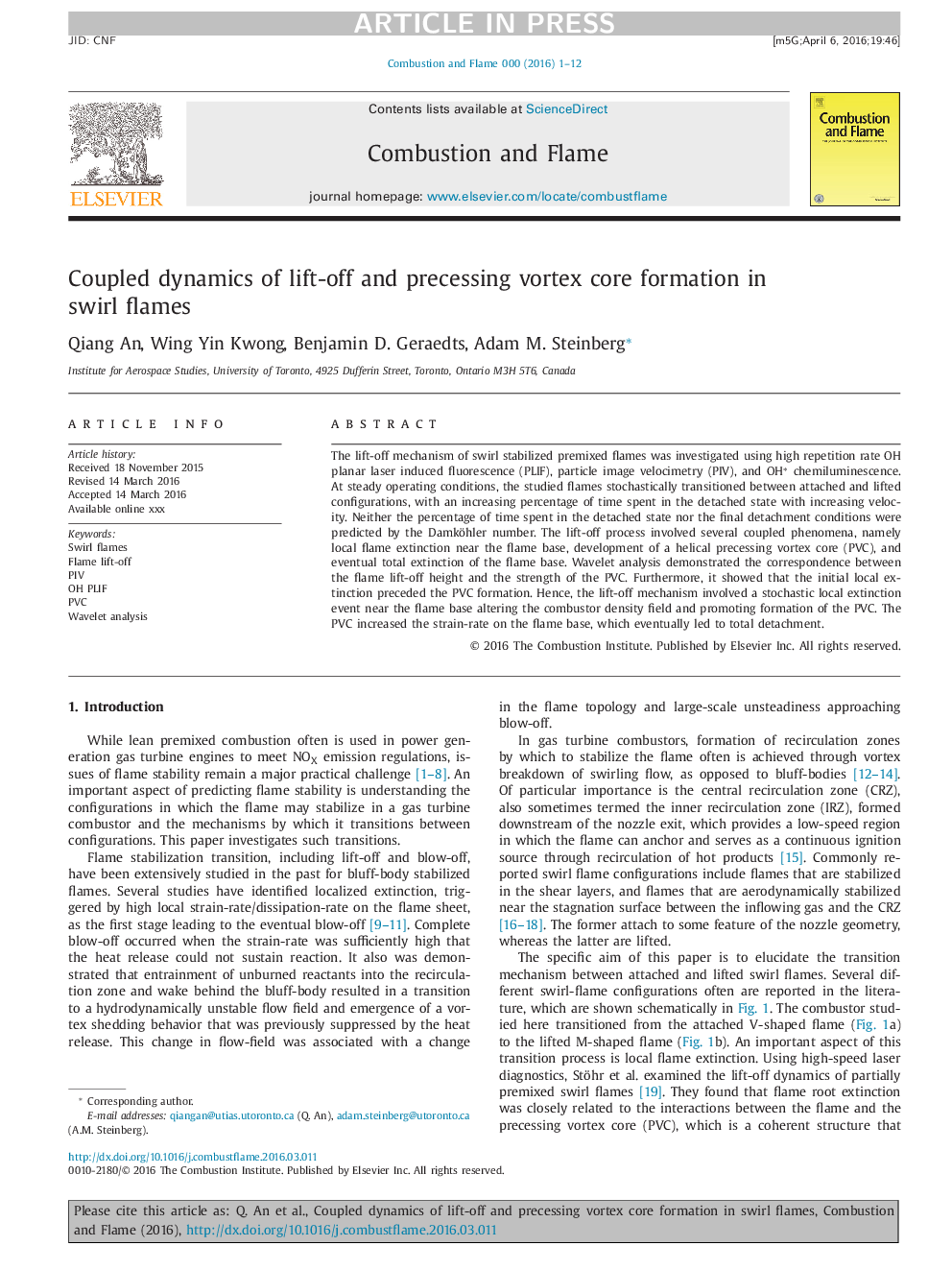| Article ID | Journal | Published Year | Pages | File Type |
|---|---|---|---|---|
| 6594047 | Combustion and Flame | 2016 | 12 Pages |
Abstract
The lift-off mechanism of swirl stabilized premixed flames was investigated using high repetition rate OH planar laser induced fluorescence (PLIF), particle image velocimetry (PIV), and OH* chemiluminescence. At steady operating conditions, the studied flames stochastically transitioned between attached and lifted configurations, with an increasing percentage of time spent in the detached state with increasing velocity. Neither the percentage of time spent in the detached state nor the final detachment conditions were predicted by the Damköhler number. The lift-off process involved several coupled phenomena, namely local flame extinction near the flame base, development of a helical precessing vortex core (PVC), and eventual total extinction of the flame base. Wavelet analysis demonstrated the correspondence between the flame lift-off height and the strength of the PVC. Furthermore, it showed that the initial local extinction preceded the PVC formation. Hence, the lift-off mechanism involved a stochastic local extinction event near the flame base altering the combustor density field and promoting formation of the PVC. The PVC increased the strain-rate on the flame base, which eventually led to total detachment.
Related Topics
Physical Sciences and Engineering
Chemical Engineering
Chemical Engineering (General)
Authors
Qiang An, Wing Yin Kwong, Benjamin D. Geraedts, Adam M. Steinberg,
